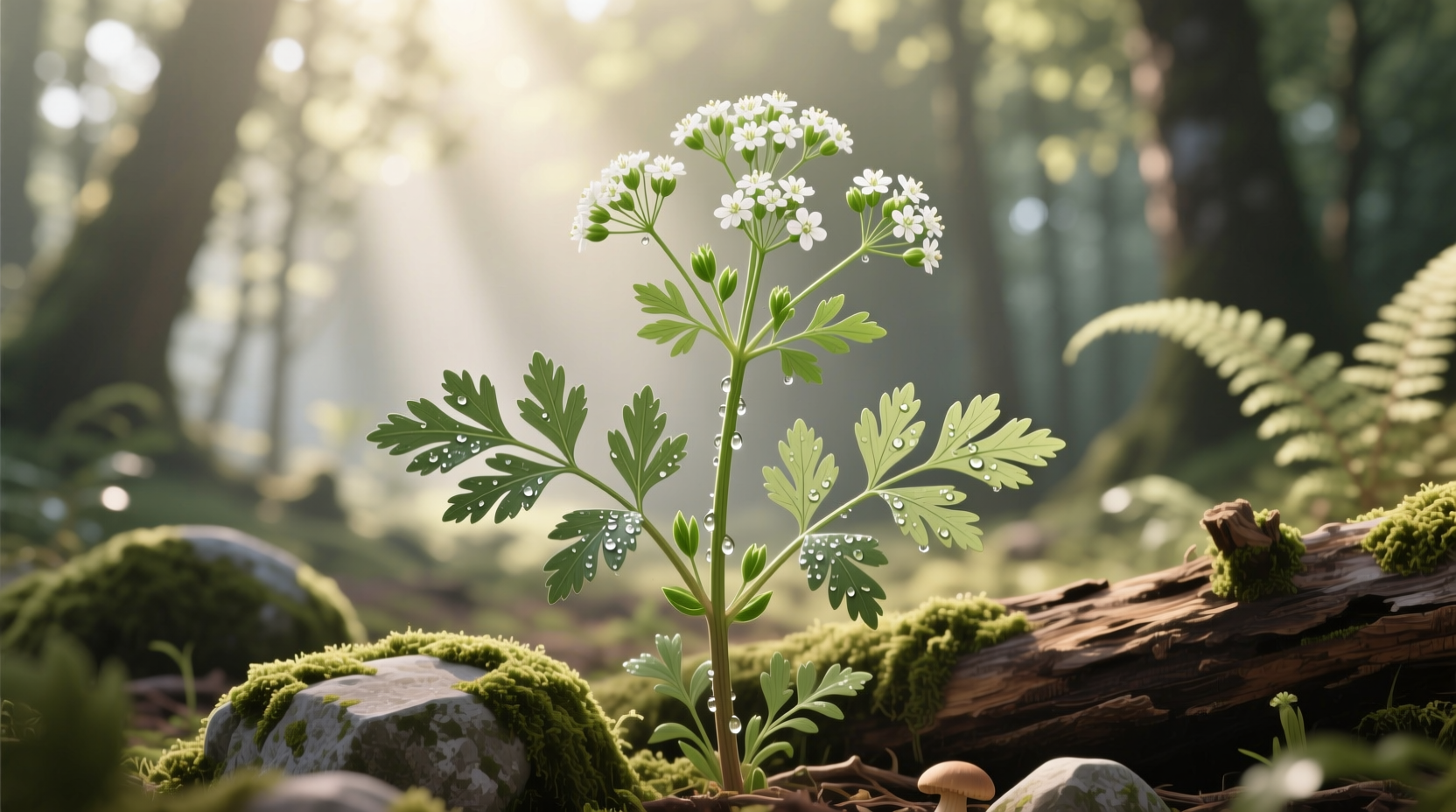Foraging wild plants offers a direct connection to our culinary heritage, but demands precision when identifying species like wild parsley. Mistaking toxic plants for edible varieties can have severe consequences, making accurate identification skills essential for anyone exploring natural food sources.
Why Wild Parsley Identification Matters for Your Safety
Each spring, emergency rooms treat cases of plant misidentification, with parsley-family look-alikes accounting for numerous incidents. Wild parsley (Petroselinum segetum) grows abundantly across Europe and North America, often appearing alongside its deadly cousin, poison hemlock (Conium maculatum). Understanding the critical differences isn't just botanical trivia—it's a safety necessity for foragers.
Step-by-Step Wild Parsley Identification Guide
Follow this systematic approach when examining potential wild parsley specimens. Never consume any plant without confirming all identifying characteristics.
Leaf Structure Analysis
Wild parsley features flat, triangular leaflets with serrated edges arranged in a pinnate pattern. The leaves grow in a basal rosette during early growth stages. When crushed, they release a distinctive parsley aroma—this sensory check provides immediate verification. Compare this to:
| Plant Species | Leaf Characteristics | Stem Features | Scent Test Result |
|---|---|---|---|
| Wild Parsley | Flat, triangular leaflets with serrated edges | Smooth, solid, green stems | Distinct parsley aroma |
| Poison Hemlock | Fern-like, lacy leaves with fine divisions | Purple-spotted, hollow stems | Mousy or unpleasant odor |
| Wild Carrot | Finely divided, lacy leaves | Hairy, solid stems | Carrot-like scent |
This comparison chart reflects verified botanical characteristics documented by the USDA Natural Resources Conservation Service and university extension programs. The scent test provides immediate field verification—always perform this check before considering consumption.
Harvesting Wild Parsley: Timing and Technique
For optimal flavor and safety, harvest wild parsley during its first growing season before flowering. The plant develops bitter compounds and reduced palatability once it bolts. The ideal harvesting window occurs:
- Early spring through late summer in temperate climates
- When plants reach 6-12 inches in height
- Before flower clusters develop
Use clean scissors to cut outer leaves, leaving the central growth point intact. This sustainable harvesting method allows the plant to continue growing, ensuring future harvests. Always wash wild-harvested plants thoroughly to remove soil contaminants and potential pests.

Culinary Applications of Wild Parsley
Wild parsley offers a more intense, earthy flavor profile compared to cultivated varieties. Professional chefs value its complex notes that enhance dishes without overwhelming other ingredients. When substituting wild for cultivated parsley:
- Use 25% less wild parsley due to stronger flavor concentration
- Add during final cooking stages to preserve volatile flavor compounds
- Pair with robust ingredients like garlic, lemon, and olive oil
Traditional European preparations include wild parsley pesto, herb-infused vinegars, and as a key component in spring tonic broths. Historical records from medieval monastic gardens indicate wild parsley was commonly used in cleansing diets following winter months.
When Wild Parsley Isn't Safe: Critical Limitations
Understanding context boundaries prevents dangerous assumptions about wild parsley edibility. Never consume wild parsley when:
- Found near roadsides or industrial areas (heavy metal contamination)
- Growing in areas recently treated with herbicides
- Appearing alongside known toxic species (cross-pollination risks)
- During drought conditions (concentrated natural compounds)
The University of California Cooperative Extension emphasizes that environmental factors significantly impact plant safety. Soil composition, pollution exposure, and growth conditions affect edibility regardless of proper species identification.
Preserving Traditional Foraging Knowledge
As culinary historian Sarah Johnson notes, "Wild parsley represents one of humanity's oldest cultivated relationships with plants. Ancient Greek athletes wore parsley crowns, while Roman records document its use in funeral rites—symbolizing both life and death." This duality underscores the importance of respecting both the plant's benefits and potential dangers.
Modern foragers can honor this heritage by practicing ethical harvesting, sharing identification knowledge, and consulting regional botanical experts before consumption. Local extension offices and botanical gardens often provide free plant identification services—utilize these resources to verify your findings.
Can wild parsley cause allergic reactions?
While rare, some individuals may experience allergic reactions to wild parsley, particularly those with existing Apiaceae family sensitivities. Symptoms include skin irritation or digestive discomfort. First-time consumers should try small amounts to assess tolerance.
How does wild parsley differ from cultivated parsley nutritionally?
Wild parsley typically contains higher concentrations of vitamins A and C, plus increased flavonoid content compared to cultivated varieties. This nutritional density results from adapting to natural growing conditions without selective breeding for taste or size.
What's the most reliable field test for distinguishing wild parsley from poison hemlock?
The scent test provides immediate verification—crush a leaf between your fingers. Wild parsley emits a clean parsley aroma, while poison hemlock produces a distinctive mousy or unpleasant odor. Always verify with multiple identification features before consumption.
Can you grow wild parsley in a home garden?
Yes, wild parsley adapts well to garden cultivation. Plant seeds in well-drained soil with partial sun exposure. Note that garden-grown plants may develop milder flavor profiles than wild specimens due to controlled growing conditions and selective pressure.











 浙公网安备
33010002000092号
浙公网安备
33010002000092号 浙B2-20120091-4
浙B2-20120091-4